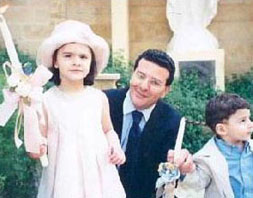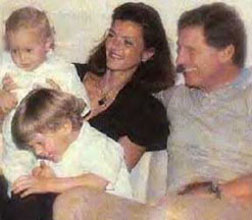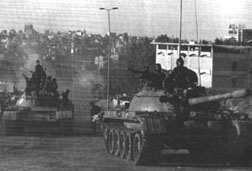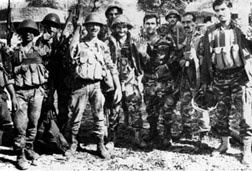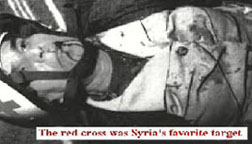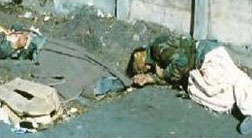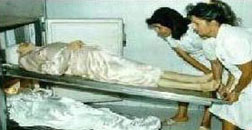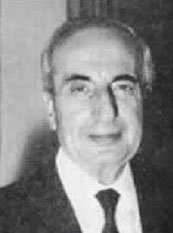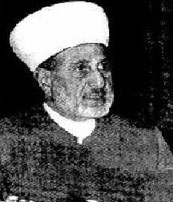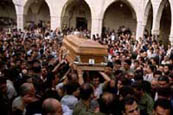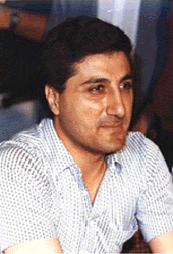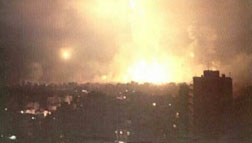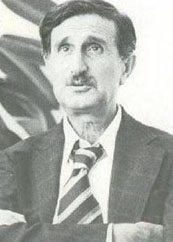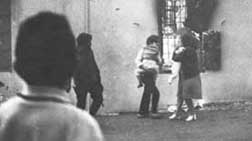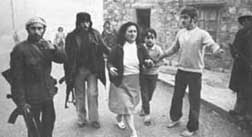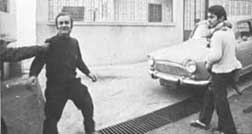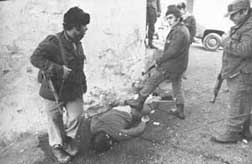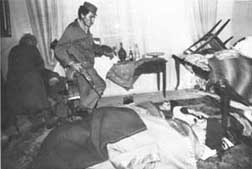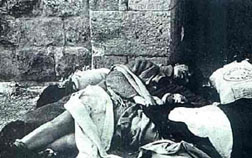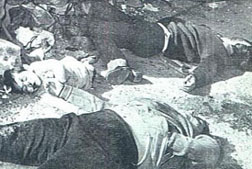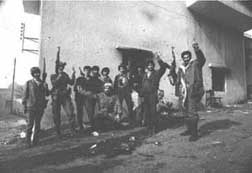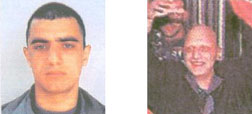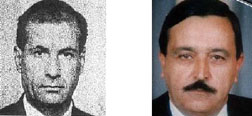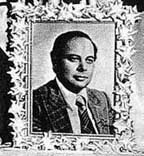|
|
(October 13, 1990) Beirut, Ministry of Defense and Presidential Palace Falls to Syrians : The Syrians commit massacres, exile the Lebanese Primer and appoint a proxy regime in LebanonOn October 13th, 1990, The Syrian forces launched an aerial and land attacks on the Lebanese presidential palace and the Lebanese army headquarters. The Lebanese army and the people supporting their government could not resist the vicious attack. The Syrian troops took over the area committing massacres against the surrendering Lebanese troops and civilians. Hundreds of people were killed. More than a hundred Lebanese officers were shut dead with a bullet in their heads, after they surrendered themselves. Hundreds of Lebanese soldiers, civilians and even priests were kidnapped and transferred to Syrian prisons. The Syrian regular troops and their proxy guerillas looted the residential and governmental possessions. The Syrian Intelligence services put their hands on the Lebanese Ministry of Defense and transferred its archive, equipment, computers, maps and strategic historic information. The Syrian occupation forces appointed a Lebanese collaborator as a president who formed a pro-Syrian government in Lebanon, while the legitimate prime minister of Lebanon was sent to exile in France.
|
Syrian army enters East part of Beirut
Syrian soldiers posing outside the Lebanese Presidential Palace
Red Cross victims,
...executed Lebanese troops,
....and civilian victims (October 13, 1990) |
|
|
|
|
(August 1987) Assassination of Mohammad ChoucairDr. Mohammad Choucair, an advisor to Lebanese President Amine Gemayel was killed inside his home in the Syrian controlled part of West Beirut on August 2, 1987. |
|
(November 1986) Syrian persecution of the residents of TripoliOn November 22, 1986, the Syrian army kidnapped hundreds of civilians from the city of Tripoli (largest in Northern Lebanon) in retaliation for attacks against Syrian military and intelligence positions. The bodies of many who were kidnapped were found in the streets of Tripoli and its suburbs. A week later, the Syrian Special forces liquidated 34 residents of Tripoli on charges of "opposition to the Syrians." |
|
(October 1986) Assassination of Sheikh Soubhi SalehSyrian agents murdered the head of the Islamic Shiite Higher Council, Sheikh Soubhi Saleh, who was shot in broad daylight on October 7, 1986. |
|
(September 1982) Assassination of Lebanese PresidentPresident elect Bashir Gmayel (1947-1982) was killed along with many of his companions in the explosion of his party's Beirut headquarters on September 14, 1982 by the SSNP (Syrian Socialist National Party). The assassination took place nine-days before he was to take office as the Lebanese President, and before the international plan of the withdrawal of all the foreign forces from Lebanese soil was fulfilled. The assassination halted the Syrian pullout. In the following year, Syrian-sponsored groups launched suicide bombing attacks against the peace-keeping US and French forces barracks killing 300 of them. The multinational forces were forced to leave Lebanon while the Syrian troops advanced into Beirut. |
|
(April 1981) Syrians massacres hundreds of studentsSyrian artillery suddenly and furiously bombarded East Beirut at a time when students were leaving schools to head home on April 2, 1981. Casualties and injuries were in the Hundreds. |
|
(July 1980) Assassination of Riad Taha The Syrian intelligence services killed Riad Taha, the head of the union of editors on July 22, 1980 in their persecution campaign against free journalism. |
|
(February 1980) Assassination of Journalist Selim LowziWorking on silencing the criticism of the Syrian invasion of Lebanon, Syria persecuted and assassinated several Lebanese journalists. Journalist Selim Lowzi was kidnapped for nine days, but found dead in the forests of Aramoun, near a checkpoint for the Syrian Special Forces on February 24, 1980. Lowzi was known for his articles opposing the Syrian regime. |
|
|
(1978) Beirut under Syrian artillery assaultOn September 30, 1978, fierce battles took place between the Syrian army and the residents of East Beirut when the Syrian forces tried to advance into the area. The Syrian forces retaliated with heavy artillery leaving hundreds of innocent civilians dead and many more injured. |
|
|
|
|
|
|
|
(January 1976) The Syrian formed and sponsored groups(Yarmouk & Sai'qa) attacking Damour city and massacring its residents, 582 were killedThe Syrian-formed Saheka Guerrillas and the Syrian-led Yarmouk Palestinian Guerrillas attacked the Christian town of Damour on January 21, 1976. 582 civilians were massacred, while the rest of the residents were uprooted from their town. Both Christian and Druze leaders tried in vain to stop the attack, but the Syrians went in their plans hoping to create a sectarian strife among the Lebanese in order to distract the attention to their invasion of the country. |
1 1- Yarmouk & Sai'qa guerrillas round up a Lebanese family outside their burning home. 2 3 4
Women shut dead after being raped
A massacre of the whole family including babies
Yarmouk & Sai'qa forces celebrate the capture of the city |
(October 1975) Syrian-sponsored groups attacks Lebanese villagesOn October 9, 1975 Saheka forces attacked the Lebanese village of Tal Abbas in Akkar killing 15 people and injuring many others. The local church was set on fire with the hope of igniting religious strife between the residents. |
|
(September 1975) Syrian-sponsored groups attacks villages in Northern LebanonOn September 10, 1975, Syrian-formed Saheka forces attacked the village of Der Ashash, in Northern Lebanon, killing three priests and causing its residents to flee. The following day, Saheka forces and guerrillas from the Syrian Baath Party attacked the village of Bet Mallat killing seven of its residents and kidnapping 10 others. |
|
Thousands of Lebanese prisoners have died in Syrian prisons under torture. Till now there are hundreds detained in Syria without any accusation or trial; some of them have been there for 27 years.
|
|
|
Click here for more about Syrian Torture
and Use of WMD Against Lebanese Detainees in Syrian Prisons
![]()
If you have more documented Syrian crimes against Lebanese, please forward them so we can check and publish them
Sources:
BBC, Arabic news division, London, October 13 and 14, 1990
From Israel to Damascus, Robert Hatem, 1999.
Nahar News Paper, Lebanon (August 26, 1973 – July 2, 2003)
Radio Monte Carlo, Monaco, October 13 and 14, 1990
Syrian Intervention in Lebanon: The 1975-76 Civil War, Naomi J. Weinberger,
NY, 1986
The Syrian Involvement in Lebanon Since 1975, Reuven Avi-Ran, 1991




